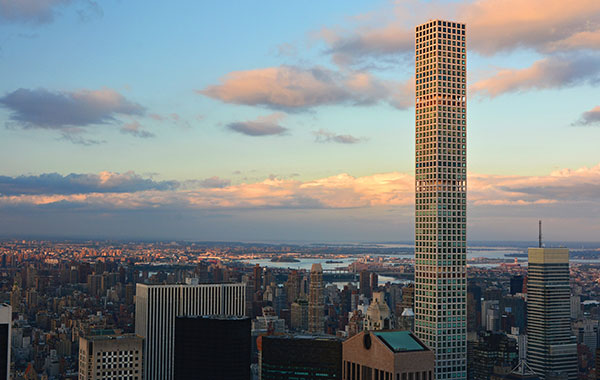50 West 66th Street
New York City
Note: As this project is under construction, the data is based on the most reliable information currently available. This data is thus subject to change until the building has completed and all information can be confirmed and ratified by the CTBUH.
- Facts
-
Metrics
You must be a CTBUH Member to view this resource.
Official Name
50 West 66th Street
Other Names
36 West 66th Street
Type
Building
Status
Under Construction
Expected Completion
2025
Country
City
Address
Function
A mixed-use tall building contains two or more functions (or uses), where each of the functions occupy a significant proportion of the tower's total space. Support areas such as car parks and mechanical plant space do not constitute mixed-use functions. Functions are denoted on CTBUH "Tallest Building" lists in descending order, e.g., "hotel/office" indicates hotel function above office function.
Residential / Other
Height
236.2 m / 775 ft
Floors Above Ground
52
# of Apartments
127
Construction Schedule
Proposed
Construction Start
Completed
Developer
Architect
Usually involved in the front end design, with a "typical" condition being that of a leadership role through either Schematic Design or Design Development, and then a monitoring role through the CD and CA phases.
Structural Engineer
The Design Engineer is usually involved in the front end design, typically taking the leadership role in the Schematic Design and Design Development, and then a monitoring role through the CD and CA phases.
Contractor
Other Consultant
Other Consultant refers to other organizations which provided significant consultation services for a building project (e.g. wind consultants, environmental consultants, fire and life safety consultants, etc).
Other Consultant refers to other organizations which provided significant consultation services for a building project (e.g. wind consultants, environmental consultants, fire and life safety consultants, etc).
These are firms that consult on the design of a building's façade. May often be referred to as "Cladding," "Envelope," "Exterior Wall," or "Curtain Wall" Consultant, however, for consistency CTBUH uses the term "Façade Consultant" exclusively.
You must be a CTBUH Member to view this resource.
Developer
Architect
Usually involved in the front end design, with a "typical" condition being that of a leadership role through either Schematic Design or Design Development, and then a monitoring role through the CD and CA phases.
Structural Engineer
The Design Engineer is usually involved in the front end design, typically taking the leadership role in the Schematic Design and Design Development, and then a monitoring role through the CD and CA phases.
Contractor
Other Consultant
Other Consultant refers to other organizations which provided significant consultation services for a building project (e.g. wind consultants, environmental consultants, fire and life safety consultants, etc).
Other Consultant refers to other organizations which provided significant consultation services for a building project (e.g. wind consultants, environmental consultants, fire and life safety consultants, etc).
These are firms that consult on the design of a building's façade. May often be referred to as "Cladding," "Envelope," "Exterior Wall," or "Curtain Wall" Consultant, however, for consistency CTBUH uses the term "Façade Consultant" exclusively.
Research

29 July 2019
Eliminate the “Void Loophole”?
Elizabeth Goldstein, The Municipal Art Society of New York; Bart A. Sullivan, McNamara Salvia
Because regulations in New York City specify the total number floors a building can have, based on its location and lot size, but do not...
Global News

29 March 2019
New York City May Close Zoning Loophole for Tall Buildings
Following a growing public uproar over developers exploiting loopholes to build tall buildings, the Department of City Planning on Friday March 28th proposed a zoning...
Global News

29 March 2019
New York City May Close Zoning Loophole for Tall Buildings
Following a growing public uproar over developers exploiting loopholes to build tall buildings, the Department of City Planning on Friday March 28th proposed a zoning...

19 March 2018
Demolition Begins for 50 West 66th Street in New York City
Demolition has begun on the final building left at 50 West 66th Street, where Extell will soon be adding yet another punctuation mark to the...
Subscribe below to receive periodic updates from CTBUH on the latest Tall Building and Urban news and CTBUH initiatives, including our monthly newsletter. Fields with a red asterisk (*) next to them are required.
View our privacy policy








